<< Previous | Displaying results 2476-2500 of 6769 for "" | Next >>
German officers review their orders during the invasion of the Soviet Union in 1941.
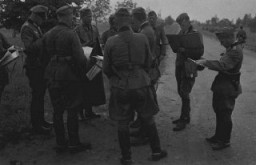
This photograph shows German vehicles that have been loaded on trains headed toward the eastern front to reinforce German forces during the invasion of the Soviet Union in 1941. A German soldier poses in the front car.
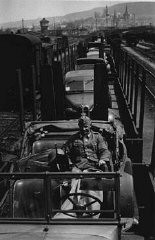
A column of refugees in the Soviet Union, following the German invasion of Soviet territory on June 22, 1941. Soviet Union, between 1941 and 1944.
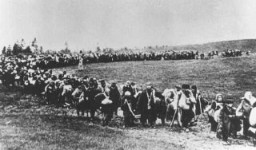
Soviet refugees sit around a fire in a makeshift camp, following the German invasion of Soviet territory on June 22, 1941. Soviet Union, between 1941 and 1944.
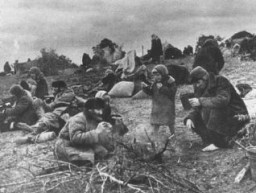
False identification papers used by Adolf Eichmann while he was living in Argentina under the assumed name Ricardo Klement.
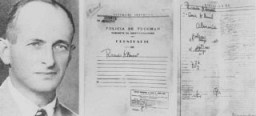
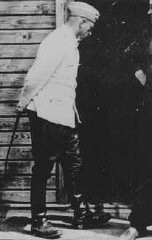
SS Lieutenant Klaus Barbie in Nazi uniform. Barbie, responsible for atrocities against Jews and resistance activists in France, was known as the "Butcher of Lyon." Germany, date uncertain.
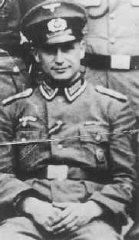
Simon Wiesenthal, Holocaust survivor and an investigator of Nazi war criminals, tours a synagogue for refugee Jews in central Europe. Place uncertain, 1946.
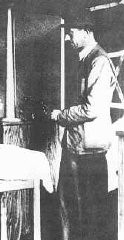
Nazi physician Carl Clauberg (at left), who performed medical experiments on prisoners in Block 10 of the Auschwitz camp. Poland, between 1941 and 1944.
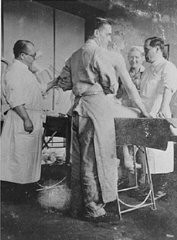
Photograph of seven-year-old Jacqueline Morgenstern in Paris, France, 1940. Jacqueline was later a victim of tuberculosis medical experiments at the Neuengamme concentration camp. The SS took 20 of the children who had been victims of medical experiments at Neuengamme to a school building in Hamburg. Situated on Bullenhuser Damm, this location was a subcamp of Neuengamme. Jacqueline and the other children in the group (10 boys and 10 girls, all Jewish) were killed there.
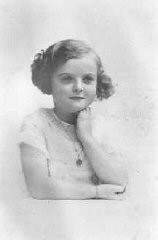
Eduard, Elisabeth, and Alexander Hornemann. The boys, victims of tuberculosis medical experiments at Neuengamme concentration camp, were murdered shortly before liberation. Elisabeth died of typhus in Auschwitz. The Netherlands, prewar.
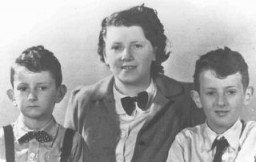
A victim of a Nazi medical experiment is immersed in icy water at the Dachau concentration camp. SS doctor Sigmund Rascher oversees the experiment. Germany, 1942.
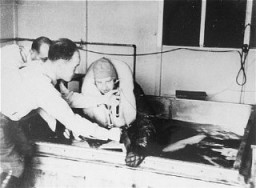
A Soviet prisoner of war, victim of a tuberculosis medical experiment at Neuengamme concentration camp. Germany, late 1944.
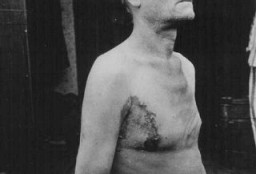
A war crimes investigation photo of the disfigured leg of a survivor from Ravensbrück, Polish political prisoner Helena Hegier (Rafalska), who was subjected to medical experiments in 1942. This photograph was entered as evidence for the prosecution at the Medical Trial in Nuremberg. The disfiguring scars resulted from incisions made by medical personnel that were purposely infected with bacteria, dirt, and slivers of glass.
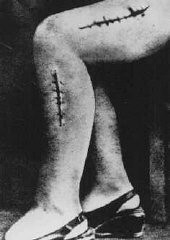
Soviet soldiers inspect a box containing poison used in medical experiments. Auschwitz, Poland, after January 27, 1945.
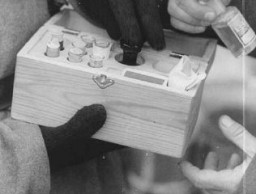
United Nations personnel vaccinate an 11-year-old concentration camp survivor who was a victim of medical experiments at the Auschwitz camp. Photograph taken in the Bergen-Belsen displaced persons camp, Germany, May 1946.
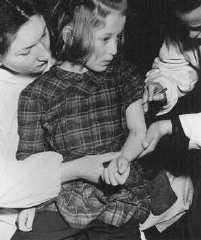
Josef Mengele, German physician and SS captain. He was the most prominent of a group of Nazi doctors who conducted medical experiments that often caused great harm or death to the prisoners. In November 1943 Mengele became "Chief Camp Physician" of Auschwitz II (Birkenau). Many of those subjected to Mengele's experiments died as a result or were murdered in order to facilitate post-mortem examination.
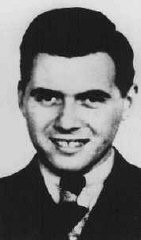
Nazi physician Carl Clauberg, who performed medical experiments on prisoners in Block 10 of the Auschwitz camp. Place and date uncertain.
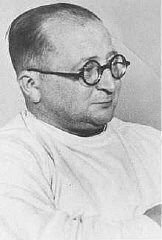
Friedrich Hoffman, holding a stack of death records, testifies about the murder of 324 Catholic priests who were exposed to malaria during Nazi medical experiments at the Dachau concentration camp. Dachau, Germany, November 22, 1945.
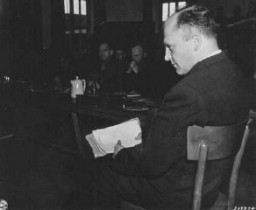
Four Polish women arrive at the Nuremberg train station to serve as prosecution witnesses at the Doctors Trial. From left to right are Jadwiga Dzido, Maria Broel-Plater, Maria Kusmierczuk, and Wladislawa Karolewska. December 15, 1946.
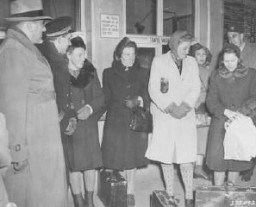
Wladislava Karolewska, a victim of medical experiments at the Ravensbrück camp, was one of four Polish women who appeared as prosecution witnesses at the Doctors Trial. Nuremberg, Germany, December 22, 1946.
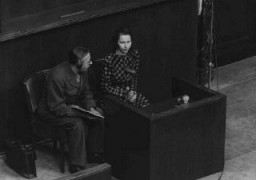
Concentration camp survivor Jadwiga Dzido shows her scarred leg to the Nuremberg court, while an expert medical witness explains the nature of the procedures inflicted on her in the Ravensbrück concentration camp on November 22, 1942. The experiments, including injections of highly potent bacteria, were performed by defendants Herta Oberheuser and Fritz Ernst Fischer. December 20, 1946.

Waldemar Hoven, head SS doctor at the Buchenwald concentration camp, testifies in his own defense at the Doctors Trial. Hoven conducted medical experiments on prisoners. Nuremberg, Germany, June 23, 1947.
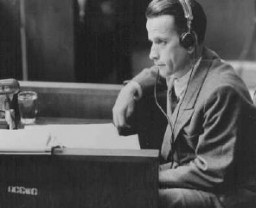
Herta Oberheuser was a physician at the Ravensbrück concentration camp. This photograph shows her being sentenced at the Doctors Trial in Nuremberg. Oberheuser was found guilty of performing medical experiments on camp inmates and was sentenced to 20 years in prison. Nuremberg, Germany, August 20, 1947.
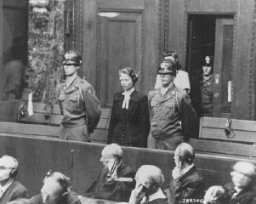
Victor Brack, one of the Nazi doctors on trial for having conducted medical experiments on concentration camp prisoners. Nuremberg, Germany, August 1947.
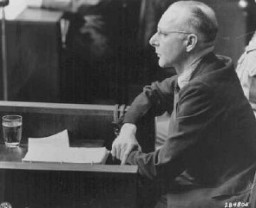
We would like to thank Crown Family Philanthropies, Abe and Ida Cooper Foundation, the Claims Conference, EVZ, and BMF for supporting the ongoing work to create content and resources for the Holocaust Encyclopedia. View the list of donor acknowledgement.